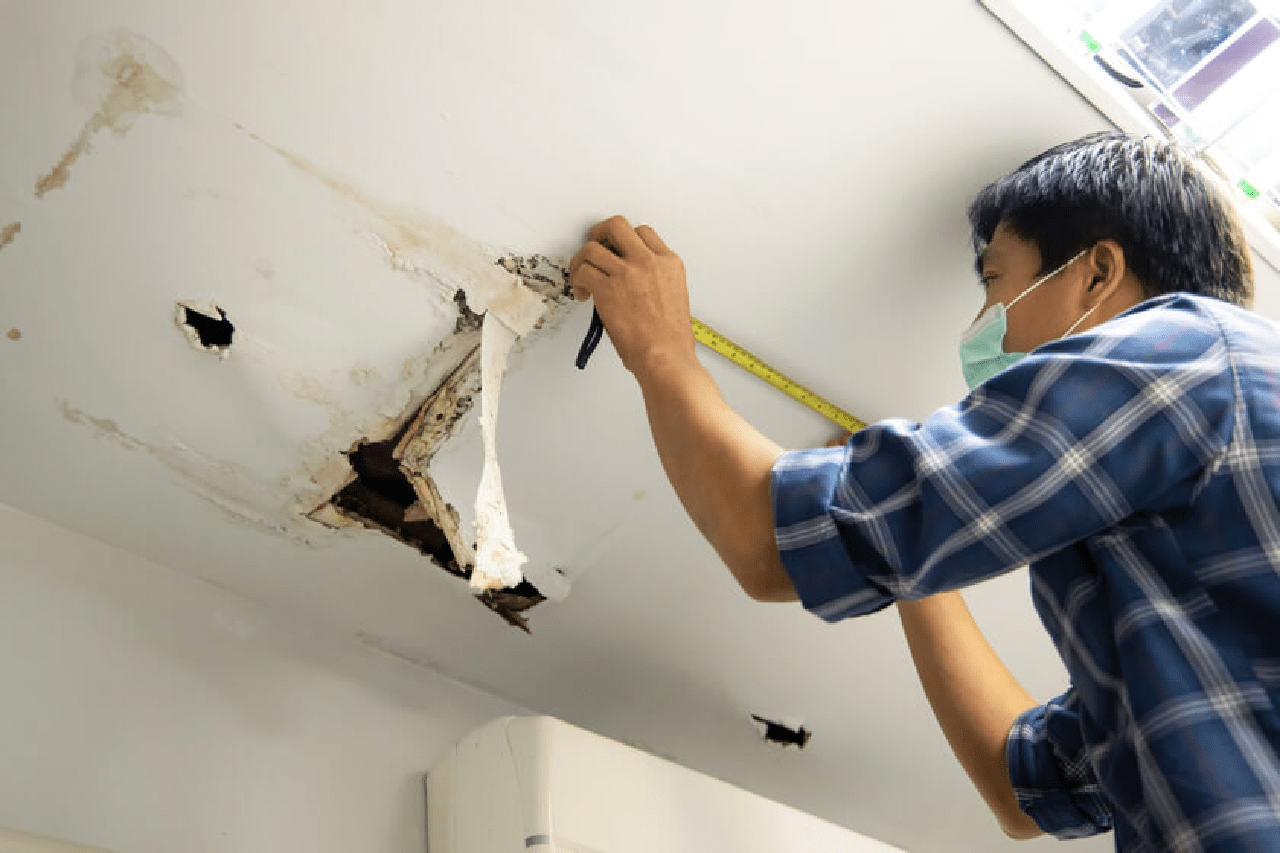How to Repair Damaged Sheetrock
Sheet rock, which is also called drywall, is great because it’s easy to fix. With just a few tools and supplies, the average homeowner can easily do this job and make the wall look like nothing ever happened. When you’re going to paint the room anyway, that’s the best time to fix the drywall. So, before you start painting, check your walls for damage so you can fix them before painting.
Still, there are times when damage happens and needs to be fixed. Maybe you were moving furniture and a table corner hit the wall, or maybe you opened a door with a little too much force. Below, we’ll talk about the most common types of damage and the best ways to fix them so your walls look as good as new.
You will need the following basic tools:
- Joint compound: This is usually already mixed, and it comes in containers as small as 1 pint and as big as 5 gallon pails.
- Drywall knives: Depending on the size of the damaged area, you may need anything from a 1-inch putty knife to a 12-inch drywall knife or even a corner trowel.
- Tape: Choose from fiberglass mesh tape or traditional paper joint tape.
- A hammer.
- Drill/driver.
Damage can range from small nail holes and cracks to big holes and even crumpled sheet rock. All of these fixes can be done with the same basic tools and different ways of doing the same things. Some common issues are:
- Nail holes and pinholes are usually left by pictures, mirrors, and other things that hang on the wall. They are easy to fill. First, though, it’s best to use a hammer to carefully tap over the hole to make a shallow impression. Another way to deal with nail holes is to cut the opening of the hole at an angle with the utility knife. This will get rid of any drywall paper that is sticking out of the hole. In either case, the goal is to make sure that any flaws on the wall’s surface don’t stick out so that a smooth, even layer of joint compound can be put on. Next, spread a thin layer of joint compound over the area with a knife that is 1 to 2 inches long. Let it sit overnight to dry. Since joint compound shrinks as it dries, you will probably need to put another layer over the hole that has “sunk.” Next, use 120-grit sandpaper to smooth the surface. Be careful not to damage the surface around you. Lastly, clean the area before you paint.
- Nail-pops can’t be fixed by putting on another layer of joint compound and paint. First, you’ll need a pair of pliers to pull the nail out. Be careful not to hurt the area around you. If you have to use a hammer to get the nail out, put a thin piece of wood behind the hammer as it presses against the wall to protect the drywall. Next, drive one drywall screw about an inch above the hole and another about an inch below. Make sure the screws are countersunk into the drywall. Now, to finish your repair, do what was said above about how to fix nail holes.
- Small holes and cracks can be fixed with a couple of thin layers of joint compound and a light sanding with fine-grit paper. After that, clean the area and paint it.
- Large holes and cracks will need more than just joint compound to repair. One way is to use a keyhole saw to make the hole square and then draw a square on a piece of drywall that is the same thickness. Add a 2-inch border around your shape on the same piece of drywall and cut out your patch. Flip the piece over and cut out the two-inch margin, leaving only the face paper. You should end up with a square piece of drywall that fits into the hole, but the face paper will be 2 inches bigger on all sides than the hole. Spread joint compound around the hole, then put your patch in the hole and use a drywall knife to flatten the overlapping face paper into the joint compound. Trim the edges and leave it overnight to dry. Next, lightly sand the area and use a bigger knife to add another coat of joint compound. After letting it dry, sand, dust, and paint it.
- If the damaged area is just too big, the best way to fix it is to cut out the damaged section back to the nearest studs. Find the middle of each stud on both sides and cut the drywall to the same length along the middle of each stud. Using a square, measure lines across the top and bottom of your vertical cuts to make either a square or a rectangle, and cut out the section. Take out the piece of drywall that is broken and replace it with a patch that is the same size and thickness. Put it in place with screws, then fill the seams with joint compound and cover them with joint tape. Let it dry, then sand it, coat it again with compound, sand it again, dust it, and paint it.
As you can see, if you have time, patience, and the right tools, you can fix your damaged walls so quickly that it looks like you just moved in. Call or stop by for all of your drywall needs, whether you need tools, materials, or advice. Our knowledgeable staff will help you get rid of those unsightly dings, dents, and cracks.
Tags : Power Tools, Hardware, Building Materials, Welding Tools







